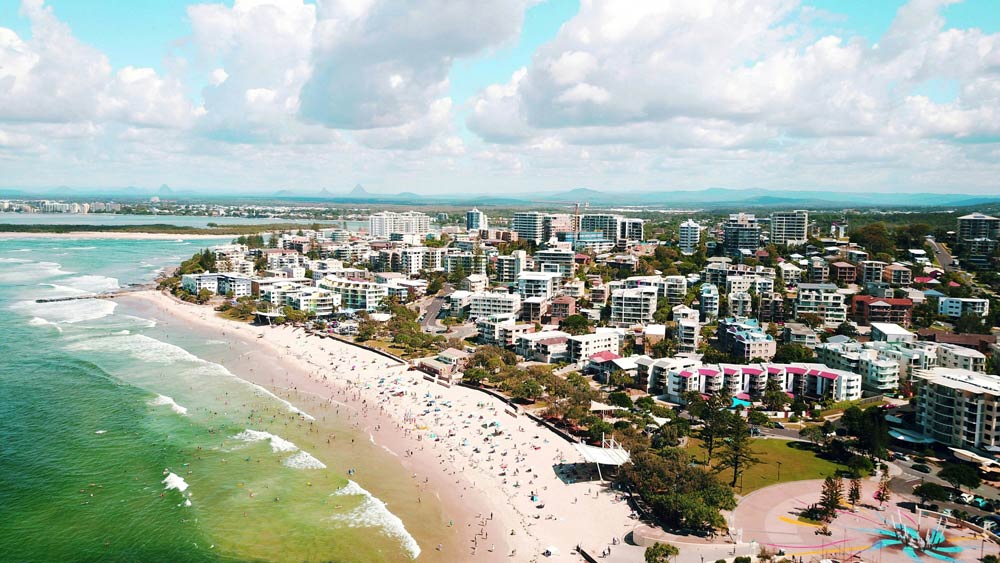
The Sunshine Coast blends tourism, lifestyle and rapid population growth, driven by infrastructure like the new Maroochydore CBD and hospital precinct. Families cluster in Buderim and Sippy Downs, retirees favour Caloundra and Coolum, and younger households gather near Mooloolaba. Kit homes adapt to this variety with flexible layouts: family homes with multiple bedrooms, compact dwellings near universities, and granny flats that add rental potential in high‑demand suburbs.
Subtropical conditions bring humid summers, heavy rainfall and cyclonic winds on rare occasions. Steel‑framed kit homes perform well with corrosion‑resistant fasteners, reflective roofing and high insulation to reduce cooling loads. Passive ventilation, wide verandas and shading strategies improve comfort. In coastal strips such as Alexandra Headland and Marcoola, salt‑laden air makes durable finishes and protective coatings essential for long‑term value.
Flooding is a concern along the Maroochy River, Mooloolah River and low‑lying pockets in Caloundra. Elevated kit homes with vented subfloors and raised services reduce exposure. Council overlays highlight risk areas where elevation is mandatory. Designing with resilient materials—tile floors, moisture‑tolerant wall linings—helps speed recovery. Prospective buyers should review mapping carefully when choosing land, especially in estates close to rivers and creeks.
Bushfire exposure affects hinterland suburbs like Montville, Maleny and parts of Buderim. BAL‑compliant kit homes mitigate this with ember‑screened vents, non‑combustible claddings and toughened glazing. Because kit suppliers price BAL packages upfront, owners avoid late surprises. Modular designs show how bushfire‑ready features can integrate seamlessly into attractive homes, ensuring compliance without compromising on aesthetics or amenity.
ABS 2021 shows about 66% of Sunshine Coast dwellings are owner‑occupied and 29% rented. Families dominate Buderim and Sippy Downs, retirees concentrate in Caloundra and Coolum, while students and young professionals cluster near the University of the Sunshine Coast. Granny flats are increasingly popular, allowing families to house extended relatives or create affordable rentals in a market where vacancy rates are consistently low.
The building industry faces high demand and limited trade availability, often delaying conventional projects. Kit homes reduce on‑site labour needs and provide certainty in pricing. Savings of twenty to thirty percent compared with traditional builds are common. Faster assembly shortens holding costs for buyers and accelerates returns for investors, an advantage in the Sunshine Coast where land values and demand continue to climb.
Rental yields average 4–4.5%, with higher returns possible in coastal suburbs where short‑stay markets operate. Vacancy rates are among the tightest in Queensland, particularly near employment nodes like Kawana’s health precinct. Kit homes deliver quickly into this environment, helping landlords capture demand. Adding a granny flat or dual‑key layout boosts income potential, appealing to investors targeting both permanent residents and tourists.
SEIFA data shows strong socio‑economic variation across the Sunshine Coast. Buderim and Noosa Heads rank highly for advantage, while older parts of Caloundra reflect more modest incomes. Kit homes scale across these differences, offering premium facades and finishes in affluent suburbs, and robust, affordable designs for working households. This flexibility ensures broad market appeal and better alignment with buyer budgets.
Trades are stretched thin across the region due to sustained growth and large projects like the airport expansion. Kit homes alleviate these constraints by arriving pre‑cut and engineered, reducing the need for large teams. Smaller licensed crews can complete assembly more efficiently, minimising reliance on an overstretched labour pool and lowering the risk of project blowouts in cost or time.
Sustainability resonates with Sunshine Coast buyers. Kit homes often feature solar‑ready roofing, upgraded insulation, ceiling fans and passive ventilation strategies to lower running costs. Rainwater storage, durable linings and low‑VOC finishes suit humid summers. For context, prefabricated homes in other regions may offer similar energy features, but kit homes here add the benefit of flood and bushfire resilience built into their engineering.
Buderim is a family hub with schools and amenities, Sippy Downs caters to students and young households, Caloundra provides retiree‑friendly living with beach access, Coolum blends coastal lifestyle with affordability, and Mooloolaba anchors tourism and hospitality. Kit homes adapt to each of these settings with design tweaks, from dual‑key layouts near the university to elevated builds on flood‑prone coastal land.
The Sunshine Coast’s combination of lifestyle, growth and environmental challenges creates demand for housing that is resilient, efficient and affordable. Kit homes meet this need with flood‑resistant designs, BAL compliance, adaptable layouts and faster build times. From Buderim to Caloundra, and from Coolum to Mooloolaba, kit homes provide tailored housing solutions for families, retirees and investors in one of Queensland’s most dynamic regions.
Thanks for getting in touch. One of our team members will respond to you as soon as possible.
Address: Brighton QLD 4017
Email: info@kithomes.au
Copyright © Kit Homes Nation-Wide Pty Ltd 2024. All Rights Reserved.
Privacy Policy | Disclaimer